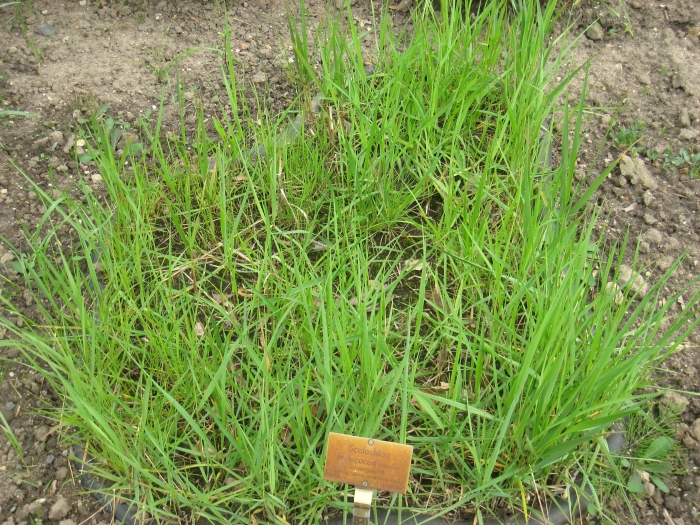Common Rivergrass
(Scolochloa festucacea)
Common Rivergrass (Scolochloa festucacea)
/
/

Daderot
Public domain
Image By:
Daderot
Recorded By:
Copyright:
Public domain
Copyright Notice:
Photo by: Daderot | License Type: Public domain | License URL: https://creativecommons.org/public-domain/ | Uploader: Daderot | Publisher: Wikimedia Commons | Title: Scolochloa_festucacea_-_Berlin_Botanical_Garden_-_IMG_8549.JPG | Notes: |














Estimated Native Range
Summary
Scolochloa festucacea, commonly known as Common Rivergrass, is a perennial grass that is typically found in wet meadows, marshes, and along riverbanks in North America, Central Asia, and Siberia. This grass is deciduous, shedding its foliage seasonally, and can reach a height of 3-5 feet (0.9-1.5 meters) with a similar spread of 4-6 feet (1.2-1.8 meters). It forms dense clumps of bright green, arching leaves and produces airy, open flower panicles that are not particularly showy but add a delicate texture to the landscape in summer.
Common Rivergrass is valued for its ability to stabilize soil and its use in water filtration in wetland restoration projects. It is also used ornamentally in rain gardens and as a naturalistic element in larger landscape plantings. This grass prefers consistently moist to wet soils and can tolerate a range of light conditions from full sun to part shade. While it is adaptable to various soil types, it thrives in those that are nutrient-rich with medium to slow drainage. Gardeners should be aware that Scolochloa festucacea can spread aggressively by rhizomes and may become invasive outside its native range, particularly in regions with similar wetland habitats.CC BY-SA 4.0
Common Rivergrass is valued for its ability to stabilize soil and its use in water filtration in wetland restoration projects. It is also used ornamentally in rain gardens and as a naturalistic element in larger landscape plantings. This grass prefers consistently moist to wet soils and can tolerate a range of light conditions from full sun to part shade. While it is adaptable to various soil types, it thrives in those that are nutrient-rich with medium to slow drainage. Gardeners should be aware that Scolochloa festucacea can spread aggressively by rhizomes and may become invasive outside its native range, particularly in regions with similar wetland habitats.CC BY-SA 4.0
Plant Description
- Plant Type: Grass
- Height: 3-5 feet
- Width: 4-6 feet
- Growth Rate: Moderate
- Flower Color: N/A
- Flowering Season: Summer
- Leaf Retention: Deciduous
Growth Requirements
- Sun: Full Shade
- Water: Medium
- Drainage: Medium, Slow
Common Uses
Bird Garden, Erosion Control, Water Garden
Natural Habitat
Wet meadows, marshes, and riverbanks
Other Names
Common Names: Sprangletop, Whitetop, Gewöhnliches Schwingelschilf, Roseau Fausse-Fétuque, Vassvingel, Kasgräs, Rivergrass
Scientific Names: , Scolochloa festucacea, Graphephorum arundinaceum, Festuca borealis, Fluminia arundinacea, Graphephorum festucaceum, Scolochloa marchica, Fluminia festucacea, Schenodorus arundinaceus, Donax festucaceus
GBIF Accepted Name: Scolochloa festucacea (Willd.) Link